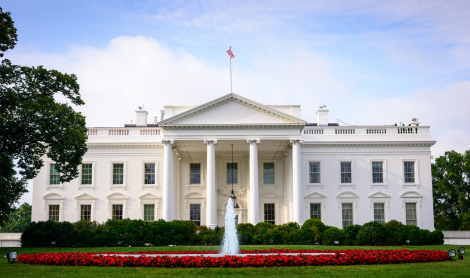This blog post was written by David Greenberg, Director of Leadership Development at NACSA. These are David’s reflections after participating in the new public charter school application process with Osprey Wilds ELC, and do not necessarily reflect the positions of Osprey Wilds ELC, other reviewers participating in the process, or the school proposal team. This is the second of two posts on David’s experiences in the new public charter school application process with Osprey Wilds ELC. This particular post underlines David’s experiences reviewing a new charter school application focused on Indigenous education.
My experience in early 2021 as part of the new charter school application review team for Osprey Wilds ELC (OW), the largest public charter school authorizer in Minnesota, was a powerful example of community-centered charter schooling in action.
I deepened my understanding of community—and what public charter schools can be—through this application review process. I also learned about the limits of my own expertise and why it is so critical to have cultural and community experts as part of a new charter school application review team.
One application from northern Minnesota stands out, starting with the school name. Names are powerful, and school names are no exception. Too often, new school applications provide no insight into why founders chose the school’s name. Not in this case.
But before getting into the name, I want to share the deep community and cultural grounding the founders included as a footnote to the fourth sentence of their application.
Throughout this application we will refer to our Tribe as the Red Lake Nation. The Tribe’s Federally recognized name is the Red Lake Band of Chippewa Indians. We will refer to our people as Ojibwe and our language as Ojibwemowin. We will refer to our culture and values as Ojibwe and, when referring to our broader cultural roots as Indigenous people, as Anishinaabe. Our understanding of our language and culture is informed as much or more by oral culture shared among families, elders, and other knowledge keepers. It is also informed by three books. Braiding Sweetgrass, by Robin Wall Kimmerer teaches about broader Anishinaabe cultural knowledge by looking closely at the environment and plant life. Rez Life by David Treuer teaches about contemporary Native American culture in Minnesota and Wisconsin through a series of six portraits. It offers insight into life on the Red Lake Reservation, as well as other tribal lands in the two states. Warrior Nation by Anton Treuer is a history of the Red Lake Nation.
When I read that footnote, I knew I was about to learn a whole lot more about how this community was central to the development of this school and how it values Indigenous education. And then came this:
For more than a decade, our community has held discussions about the importance of creating a learning environment (school) that will provide our students the skills and mindsets necessary for success that are largely absent from our existing K-12 public schools choices. When it opens in fall 2022, Endazhi-Nitaawiging will be the long-awaited response to those discussions.
This community. Had been talking about a school such as this. For more than 10 years!
Back to the name. The application explained what the name means and why the founders selected it: “Endazhi-Nitaawiging, loosely translated to English, says ‘it grows.’ It can refer to a child, to a well-rooted plant, a place, knowledge, wisdom. We have chosen this as the name of our school because it can carry this much meaning.”
Barely one page in, I felt a need to see who specifically was part of this founding group. Who was the “we” and the “our” already referenced multiple times in the first pages of this application?
While reviewing resumes and later, during the capacity interview, I learned that this was perhaps the strongest and most community-embedded group of founders I had ever seen (and I’ve reviewed dozens of new charter school and charter school grant applications over the past 10 years.) Their founders included:
- the CEO of the local Boys and Girls Club;
- an administrator at the local hospital;
- local folks with BAs or MAs in bilingual education, including in Ojibwemowin, and Indigenous education;
- a grant writer for the Red Lake Nation;
- language instructors;
- local community members with expertise in ceremonies, beading, fishing, maple sugar camps, and ricing;
- multiple teachers including the director of the local preschool Ojibwemowin immersion program; and
- the Tribal Secretary of the Red Lake Nation.
I could keep going. Equally important, these were parents, uncles, aunts, grandparents, and neighbors.
The group—experts through lived experience, many with professional credentials as well–was creating a school for their community. For their children.
There was overwhelming evidence that this group knew how to educate their children. They had evidence of community support. Founders had experience running the local preschool immersion program. While founders’ experience with charter schools specifically was minimal (as evident in some documents such as the draft bylaws which were not fully consistent with charter school requirements) no issues raised serious red flags for me. The operations plan addressed most areas, though I had some questions. And the financial plan actually seemed too conservative, making me wonder if they were aware of various pots of education funding available to them, which I did not see in the budget.
When our review team gathered to discuss this application, we were fortunate to have two experts in Indigenous education with relevant lived experience—both from Minnesota and one a member of the Red Lake Nation—on the team. They saw things in the application that I couldn’t see. They suggested important questions about the program that I didn’t know to ask.
As a group, we crafted these and other questions for the capacity interview. That interview put to rest any potential doubts I or any of the reviewers had. There were upwards of 15 founders on the call. While it’s not necessarily a “best practice” to have so many on the call, it didn’t matter. Nearly each leader spoke to some aspect of the application, answered a question about the program, or shared why this school is important to, and will be part of, the fabric of this community—of their community.
Recommending approval of this school was a slam dunk. Reviewers were unanimous in their positive recommendations. The OW Charter School Committee concurred, and the OW Board of Directors approved this new school at its April 2021 meeting. The school plans to open in Fall 2022. While no school is perfect, the strong founders group understands that the hardest part —actually opening, operating, and educating students really well—–is yet to come.
This application process reminded me that community-centered education isn’t a new concept, especially for the Red Lake Nation.
I was also reminded that chartering a public school can be an inspiring process through which authorizers can and must center the needs of communities. The Endazhi-Nitaawiging School founders’ approach was infused with an understanding that this school, in order to be successful, must not only be for its community, but also be of its community.
The school “share[s] a reciprocal relationship” with families and community, the application stated. School leaders, board, and staff “can learn as much about our school’s story from our families and community as our families and community can learn from them.”
If I am fortunate enough to visit the school someday, I can’t wait to see it in action, centered in, reflecting, and serving its community.
Read more about how this commitment to collaboration #WithCommunities happens in practice and why it’s critical to advancing quality education systems. To read the full guide for educators, school leaders and advocates, visit WithCommunities.org.
Read another powerful example from David’s reflections on centering community here.
Learn about NACSA’s recommendations for the new school application.


